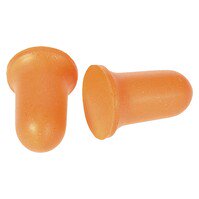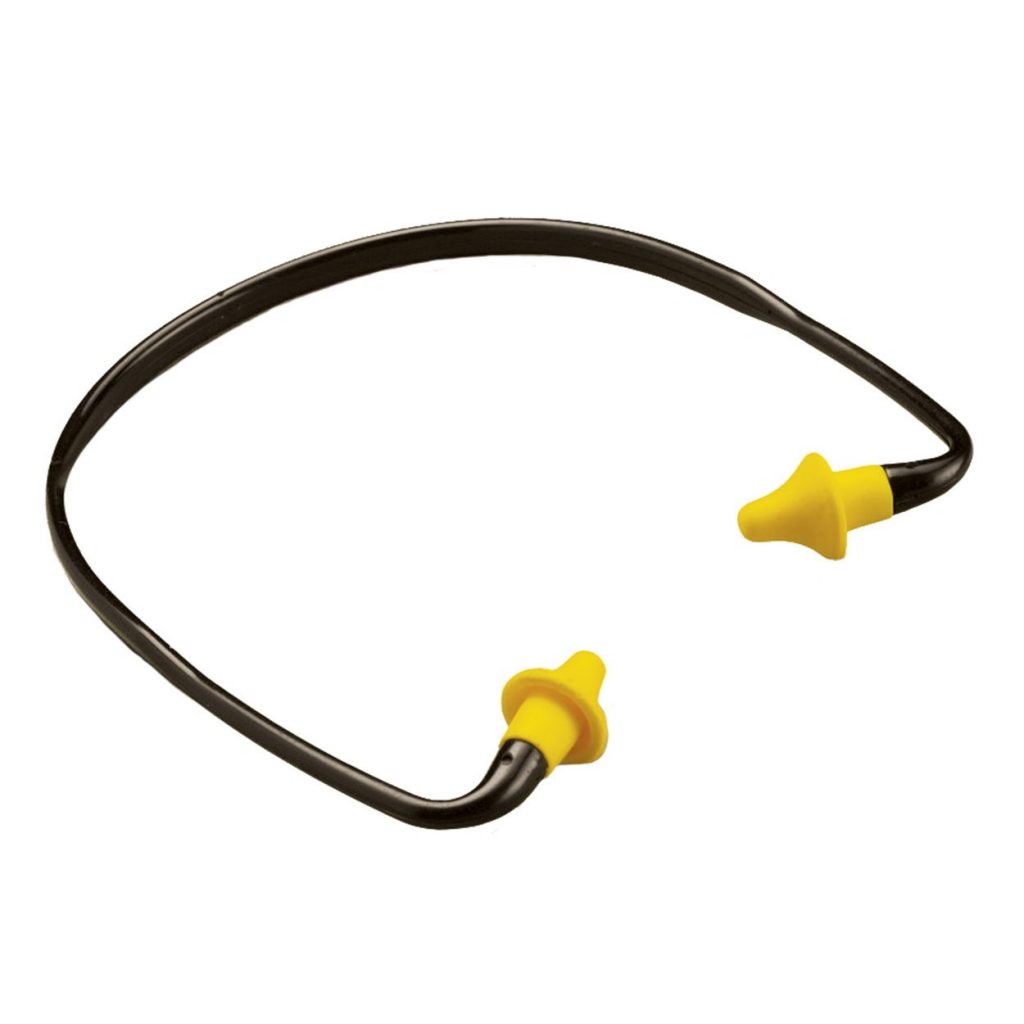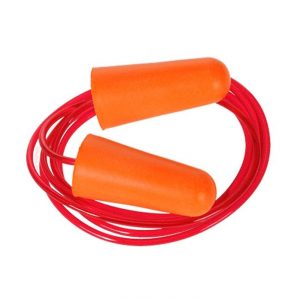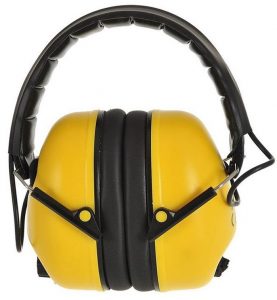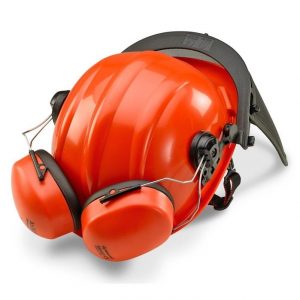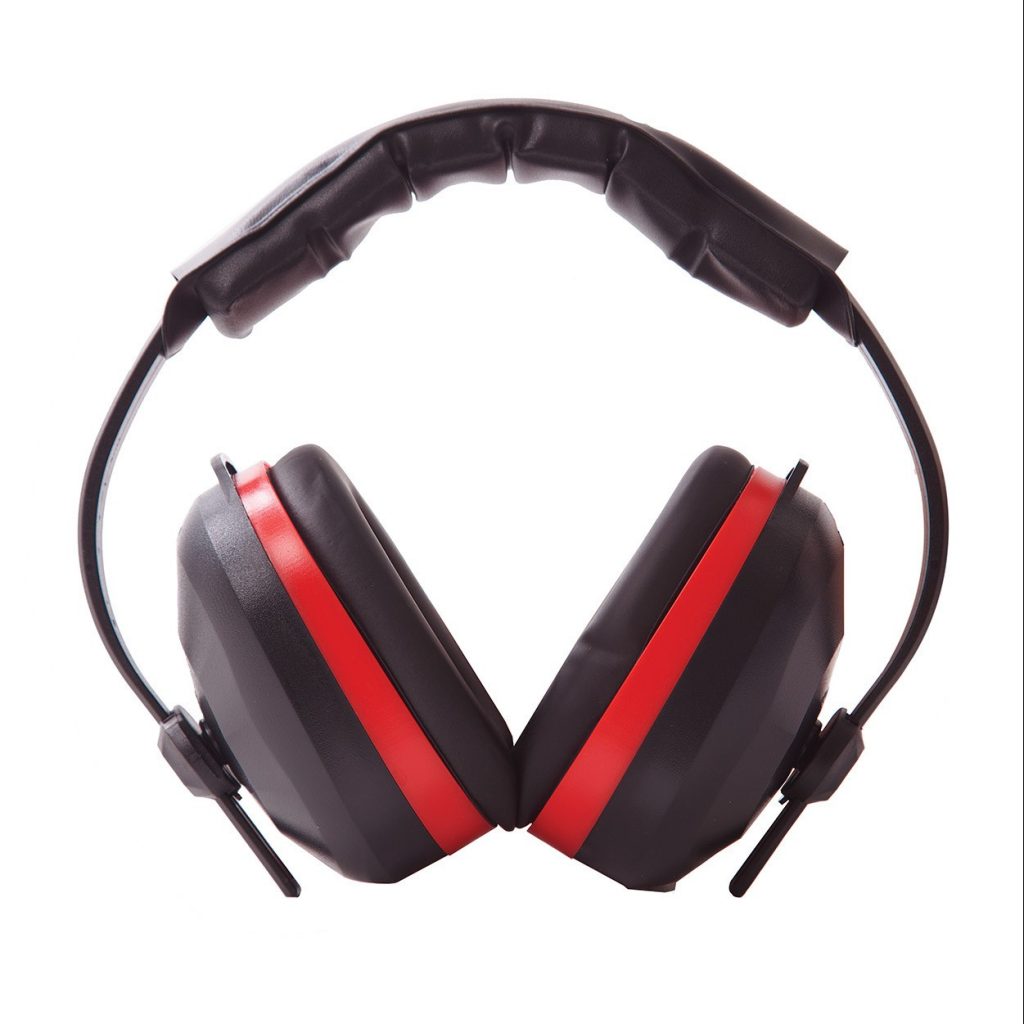Guide To Choosing Hearing Protection That's Right For You
In a noisy work environment, having the correct PPE to protect your hearing is essential. There are several consequences if you do not have the right equipment: Tinnitus, Acoustic Trauma, Temporary Hearing Loss, Industrial/Occupational Deafness, even Complete Hearing Loss
How do you choose the right hearing protection PPE for your particular industry?
- Page Contents
- Types of Hearing Protection PPE
- Does Your Hearing PPE Meet Safety Standards?
- Choose the Protection that Meets Your Purpose
- Earplugs or Defenders?
- The Replacement Rate of Hearing Protection
- Comfort and Fit
- Ease of Maintenance and Storage
- Conclusion
Types of Hearing Protection PPE
There are four main types of PPE hearing protection available:
- Disposable ear plugs
- Corded or banded ear plugs
- Earmuffs (Ear Defenders)
- Helmet mounted ear muffs/defenders
Ear Plugs
Ear plugs literally plug your ear canal. This cuts down on the sound pressure reaching your ear drum and is the highest form of hearing protection (on average) you can get.
Some ear plugs are disposable, use once and throw away, some are washable for multiple uses. Some ear plugs come with a band, some come with a cord or strap, some just come in a little packet. It should go without saying you do not share used ear plugs, even if they have been cleaned, to avoid infections.
Ear Defenders
Ear Defenders, or Ear Muffs as they are regularly known, work in a very different way. They cover the entire ear, and sealing against the head with light pressure from the over-head band. They look a little like stereo headphones. Some ear defenders do not have a complete headband and instead clip to the side of a Hard Hat - perfect for construction, ground works and roadwork.
Over the the head or clipped to your head protection, ear muffs work by "muffling" the sound pressure entering the ear canal. As such, it is essential you get a good seal between the cups and the head.
Electronic ear defenders are a new fangled gadget that work in much the same way as noise cancelling headphones. You can usually adjust the volume allowed into the ear as they electronically compress noise down below 85dB.
Does Your Hearing Protection Meet Safety Standards
The Health and Safety Executive website has a section on ‘Noise at Work’ to provide information on your rights at work as they pertain to hearing safety.
The UK alone sees 17,000 people suffering from deafness, ringing in the ears, or other conditions caused by noisy work environments.
The Control of Noise at Work Regulations 2005 (PDF) replaced the Noise at Work Regulations 1989 on the 6th of April 2006. It should always be remembered that PPE is a 'last line of defence' solution to workplace personal safety, these regulations were put in place to ensure employers control the noise levels in the work place and/or provide the correct safety equipment for their employees.
There is a list of EN Safety standards that workers, self-employed, businesses and companies must follow. As a BSiF Registered Safety Supplier, XAMAX® only supply approved hearing protection that meets and exceeds the following standards.
- EN 352-1: 2002 - Hearing protectors - Ear muffs
- EN 352-2:2002 - Hearing protectors - Ear plugs
- EN 352-3:2002 - Hearing protectors - Ear muffs attached to a safety helmet
- EN 458:2004 - Hearing protectors - Selection, use, care and maintenance
Find ear protection that meets these safety standards and the only difficult part is remembering to wear them.
How to choose the right hearing protection for your working noise level
When you are choosing the correct hearing protection for your specific workplace, consider the level of noise that needs to be filtered out and what level of sound should be kept (eg: the voices of your colleagues, warning signals etc). To do this, you need to decide between simple ear plugs or ear muffs (however, you can use both).
Both types offer hearing protection, but earplugs generally offer more. For earplugs, the Noise Reduction Rating or (NRR) is between 22 and 33dB (decibels) whilst the NRR for ear muffs is between 20 and 30dB. However, combining the two will provide additional, and perhaps the best, protection.
Let's do some sound maths...
Keep in mind that a normal conversation is about 60dB, and sounds of 85dB and higher are harmful, depending on the length of exposure. To figure out how much hearing protection your device offers here is a basic formula: ([NRR in dB] - 7) ÷ 2 = sound level
For example, you are working on a demolition site whilst the nearby JCB's hydraulic breaker pummels the concrete - the noise exposure is 100dB and you are wearing a 33dB hearing protection device. Now, the noise level you would hear is 87 dB (33dB - 7 = 26 ... 26 ÷ 2 = 13 ... 100 - 13 = 87dB). Also, a product with a hearing protection level of 27dB would deduct 10 decibels of sound from your environment (27dB - 7) ÷ 2 = 10
You have to understand what level of sound you are exposed to in order to calculate the minimum decibels of protection you need. All employers must reduce sound to around 80dB, with the upper limit being 87dB. Most hearing protection has an eight-hour exposure rating.
Therefore consider these noise limits:
- 70-90dB for heavy machinery, electric motors, and city traffic
- Construction, factory, or highway work sites
- 100-120dB for a pneumatic drill, power saw, motorcycle, lawn mower, and rock music
- Carpentry, construction, and so on
- 140+ dB for jet engines and gunshots (pain level)
- Airport industry and in police work
For most of these industries (except for workplaces with over 140dB), any hearing protection would reduce the sound to a safe level.
Earplugs or Defenders?
There are several pros and cons of each - NRR aside - with ear plugs, ear defenders and helmet mounted ear muffs.
Ear defenders have fewer variations amongst users as one size fits most heads, they are easily seen at a distance, not lost, and can be worn with minor ear infections.
The downsides are that defenders are heavier and less portable, uncomfortable in humid areas, inconvenient for confined spaces, can interfere with prescription or safety glasses/goggles or masks.
Disposable ear plugs are small and light-weight. They can be of use with other hearing protection and are convenient in small spaces. The cons are they require more fit time, better hygiene, may irritate the ear canal, easy to lose, and difficult to see.

The Replacement Rate of Each Type of Hearing Protection
How soon the product wears out is a big factor when placing large orders of hearing PPE for your company. Consider the following replacement rates:
Banded ear plugs should be replaced when:
- Product shows wear and tear.
- Earbuds are no longer pliable.
- The headband is stretched.
- Every 6-8 months for normal wear.
- Every 3-4 months with heavy use or humid/extreme climates.
Disposable ear plugs should be replaced:
- Daily (or within reason) since they can harbour bacteria and earwax.
- May not stand up to washing.
Ear muffs and helmet mounted ear muffs should be replaced when:
- Product shows wear and tear.
- Ear cushions degrade.
- Earbuds are no longer pliable.
- The headband is stretched.
- Every 6-8 months for normal wear.
- Every 3-4 months with heavy use or humid/extreme climates.
Comfort and Fit
Employees are more likely to use hearing protection at work if it is comfortable to wear. It may seem like common sense to wear hearing protection, but how often do your employees not use their hearing PPE because it is uncomfortable to wear?
The best way to guarantee comfort is to make sure the hearing protection fits. For ear plugs, there needs to be a tight seal with the ear canal. Ear muffs need a tight seal against the side of the head.
When wearing either method of ear protection, hair and clothing should not be in the way. For foam bodied ear plugs, the majority of the plug should be in the ear canal. To double check that the fit for ear plugs is correct, cup your hands over your ears, and when you remove them, the sound level should not be different. If the sound has altered, the ear plugs need to be re-fit.
There are different disposable ear plugs and banded ones that ensure comfort, and many ear muff brands have adjustable, comfortable straps and soft ear cushions. For ear muffs attached to a safety helmet, most ear defenders have soft ear cushions, and the comfort will depend on the comfort of the helmet itself. Try out different hearing protection to find out what works best for them.

Ease of Maintenance and Storage
When choosing the right protection for your employees, make sure you consider how easy each type of protection is to maintain and store.
For maintenance, check that each type of ear plug or ear muff:
- Works to an effective standard.
- Is in good, clean condition.
- Has undamaged seals.
- Headband tension not reduced.
- No unofficial modifications.
- Check for wear and tear.
Replace if any of these are defective.
For cleaning and storing ear muffs:
- Disassemble ear muffs to clean.
- Wash with a mild liquid detergent and rinse in warm water.
- Ensure sound attenuating material inside ear cushions does not get wet.
- Remove skin, oil, and dirt that can harden ear cushions with a soft brush.
- Squeeze excess moisture from ear cushions and place on a clean surface to air dry.
- Store in original case to protect from contamination, loss, damage, damp or sunlight.
- Replace when ear cushions and foam inserts degrade.
For cleaning and storing banded ear plugs:
- Wash with a mild liquid detergent and rinse in warm water.
- Remove skin, oil, and dirt that can harden ear plug foam with a soft brush.
- Squeeze excess moisture from ear cushions and place on a clean surface to air dry.
- Keep in a case to protect from contamination, loss, damage, damp or sunlight.
- Replace pods every 2-4 weeks at least, or sooner if necessary.
For cleaning and storing disposable ear plugs:
- Dispose daily (recommended since they are inexpensive).
- Or keep in cases for reuse. (Since these are quick to harbour bacteria reuse within reason).
- Check packaging to see if they can be cleaned.
Most hearing protection units - including ear muffs - are quite inexpensive, with disposable ear plugs being the cheapest option to purchase. However thought should be given to extended use. It may only cost 50p for a day's ration of ear plugs, but for less than a fiver you can get a decent pair of defenders that could last months, if not years..
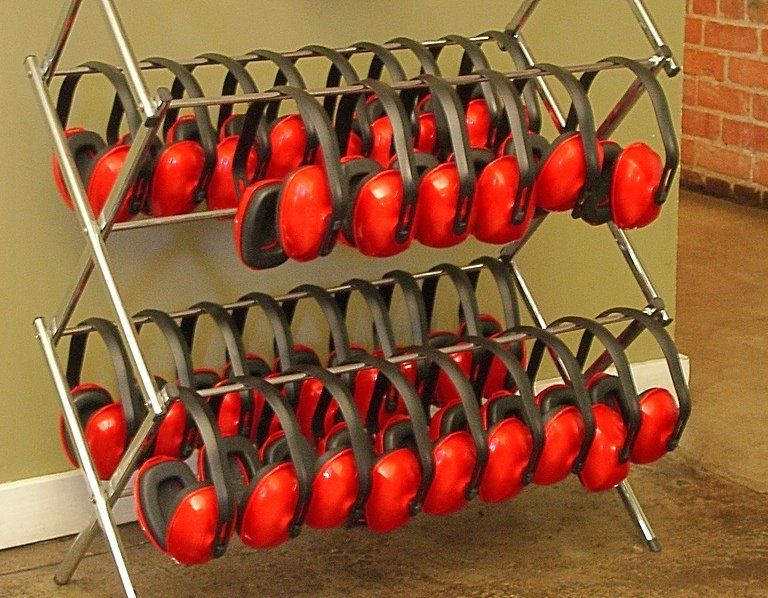
Conclusion
Hearing safety is vital to keeping yourself and/or your employees safe and happy, so make sure you make an informed decision when selecting the right Hearing Protection.
With price points being similar and all PPE products sold by XAMAX® meeting strict safety standards, you should consult those who will wear the hearing protection. Decide together what is most comfortable for them.
Like with all PPE, it is important you make sure the protection provided meets the correct safety standards. Research those and choose the correct hearing protection for your industry or task.
Consider the replacement rates of different protection available. Some types are disposable, some last a long time if properly cared for. Choose the correct hearing protection for your specific needs.
Check that it is comfortable and properly fits everyone who'll be wearing it.







